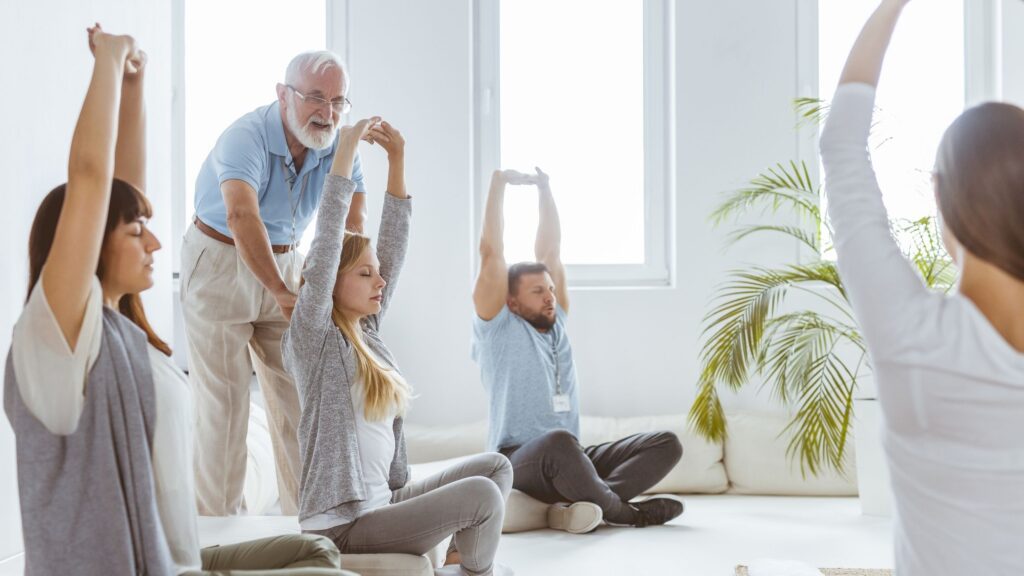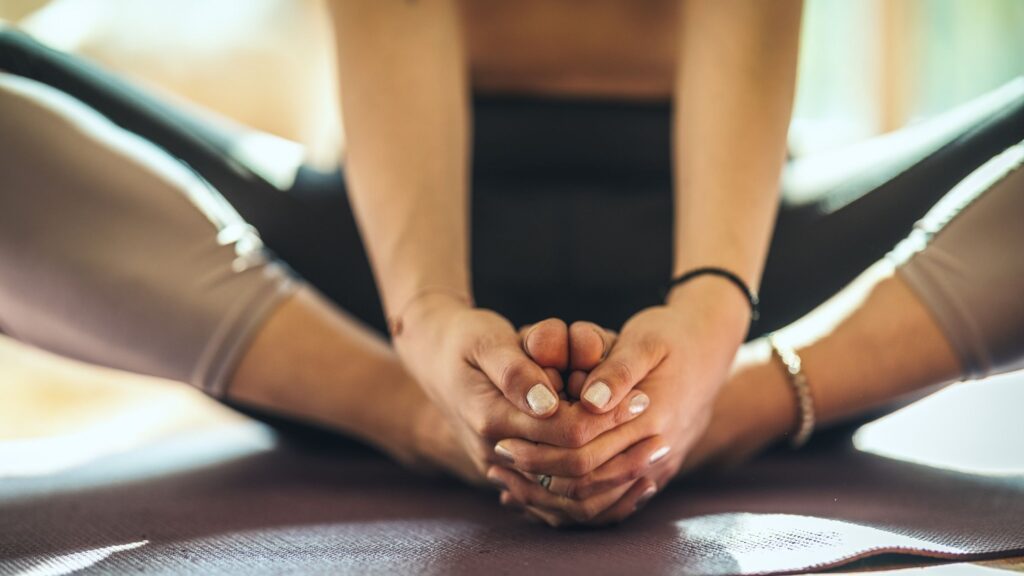The time is running out. Everyone is looking to you for answers. Which cable do you think you should cut? While most of us will never face the life-or-death situations that a bomb squad faces, everyday situations such as job interviews, public speaking, and family problems can be just as stressful if we aren’t prepared. Learning to stay calm in stressful situations will not only provide instant relief but will also help you live a healthier, happier life in the long run.
In the Moment, Calming Down
If you’re already stressed, one of the best methods to relax is to avoid engaging with the stressor as much as possible. Taking a few seconds to breathe before returning to the issue can sometimes be enough to help you relax.
Before responding in a heated argument or scenario, count to ten or take 2-4 deep breaths.
Pause for a moment.
Stop and excuse yourself for a moment if an argument with somebody is growing heated, for example, by stating something like, “I’m feeling a little overwhelmed right now.” Before we continue discussing this, I need to take a minute break.” Move to a new location, concentrate on deep breathing, and repeat a calming mantra like “I can handle this calmly.” This is something I can handle.” Concentrate on your senses. When we’re worried, our bodies can mistakenly interpret it as an attack and send us into “fight or flight” mode. This causes the production of hormones like adrenaline, which cause your blood vessels to constrict, your breathing to become quick and shallow, and your heart rate to increase. This fear response, known as “automatic reactivity,” might develop a habit for your brain over time. Slowing down and concentrating on your specific physical responses can help you learn to recognise what it feels like to be extremely anxious. This deliberate process of detecting what’s going on in your body, according to studies, can also assist retrain your brain’s automatic routines.
Make An Strategy
Take note of everything that is going on in your body, but try not to pass judgement. If you’re nervous about doing well on a final test that’s coming up in a few minutes, for example, you could think to yourself, “My face feels heated and flushed.” My heart is pounding furiously. My palms are dripping wet. When taking notes, try to be as unobtrusive as possible.

Take a few deep breaths in and out. When your body goes into “fight or flight” mode, your sympathetic nervous system can cause major breathing problems. When you’re stressed, breathing might be tough, but it’s crucial to focus on taking long, even breaths. This can help you feel more peaceful and relaxed by restoring oxygen to your body and decreasing lactate in your system. When you’re agitated or upset, you’ll undoubtedly notice that your breathing comes from the very top of your chest, even your throat. Instead, try to breathe from your diaphragm. One hand should be on your lower belly, just below your ribs, and the other should be on your chest. Slowly inhale through your nose. If possible, try to breathe in for a 4-count. When you inhale, your belly should expand along with your chest: this is diaphragmatic breathing. For 1-2 seconds, hold your breath. After then, slowly exhale via your mouth or nose. If possible, try to exhale for a 4-count. For a few minutes, repeat this technique 6-10 times per minute. To keep yourself from becoming distracted, you might find it beneficial to recite a mantra while breathing or count your breaths. A mantra might be a single syllable like “om” or a phrase like “breathing into my body [when inhaling], breathing out release (while exhaling).”
Relax your muscles as much as possible. You may automatically tighten and tense your muscles when you’re upset, which can make you feel even more agitated and “wrapped up.” Progressive Muscle Relaxation, or PMR, can help you release tension and feel calmer and more relaxed. The goal of PMR is to intentionally tense and then release muscles in groups. There are a number of free guided PMR exercises available on the internet. Berkeley has a script that you can follow. A free 11-minute audio guide about PMR is available from MIT.
If you can, find a peaceful, comfortable location. If this isn’t practicable, there are still various PMR strategies you can use. If at all possible, loosen tight garments. Sit or lie down comfortably (but lying down may cause you to fall asleep!). As you do your PMR groups, make sure you’re breathing evenly. Start with your face muscles, as many people carry stress in their faces, necks, and shoulders. Begin by opening your eyes as wide as they will go for 5 seconds, then slowly close them. Close your eyes tightly for 5 seconds, then slowly open them. Take a 10-second break to notice how these locations feel. Make your way to the next group. Tighten your lips for 5 seconds, then let go. For 5 seconds, smile as wide as you can, then release. Allow yourself 10 seconds to experience the sensation of calm before going on. Tension the muscle groups for 5 seconds before releasing the tension. Between groups, take a 10-second relaxation break. If time allows, work on the remaining muscle groups: neck, shoulders, arms, chest, stomach, buttocks, thighs, lower legs, foot, and toes. If you don’t have time to execute a full PMR release, consider releasing your facial muscles only. You may also attempt a quick hand massage, as our hands frequently hold a lot of tension.
An Effort To Exercise

Make an effort to exercise. Exercise releases endorphins, natural chemicals that make you feel peaceful and joyful, making it a natural mood booster. Several studies have shown that exercising on a regular basis might help you feel calmer and happier. 30 minutes of physical activity per day, whether you run, do callisthenics, yoga, or lift weights, can help you relax. Exercise may also help to prevent heart disease.
According to studies, performing some aerobic exercise before a potentially stressful encounter can actually help you stay calm during that experience. Yoga, for example, is a good activity to try. Deep breathing, meditation, and moderate physical movement are all emphasised, which can help you relax.
Stress is a powerful motivator. It could even indicate that you’re passionate about what you’re doing or planning to undertake. Mindfulness techniques can assist you in recognising and acknowledging stressful experiences without passing judgement on them. Keep your expectations in check. If you’re still stressed because you can’t take the steps fast enough no matter how hard you try, you probably haven’t established realistic goals. It can be difficult to accept that sometimes you can’t achieve something, at least not within a certain time frame, in a society that emphasises a can-do mentality. If this is the case, you should adjust your timeline or your expectations. If you can’t do that, the circumstance is one that you have no control over. Make an effort to exercise. Exercise releases endorphins, natural chemicals that make you feel peaceful and joyful, making it a natural mood booster. Several studies have shown that exercising on a regular basis might help you feel calmer and happier. 30 minutes of physical activity per day, whether you run, do callisthenics, yoga, or lift weights, can help you relax. Exercise may also help to prevent heart disease. According to studies, performing some aerobic exercise before a potentially stressful encounter can actually help you stay calm during that experience. Yoga, for example, is a good activity to try.
Mindfulness Techniques
Meditation is all about being still and accepting what is happening right now. Even in the midst of your daily stressors, meditation can help you feel peaceful and relaxed. Meditation can even alter how your brain responds to stress over time! The benefits of mindfulness meditation, in particular, have recently garnered a lot of scientific evidence. By making positive statements over and over. When negative ideas arise, challenge them by saying positive affirmations to yourself. You can train your brain to search for the good in you rather than the bad, which might help you feel less stressed. Make an effort to be mindful. You can’t, and probably shouldn’t, eradicate all stress from your life.

Deep breathing, meditation, and moderate physical movement are all emphasised, which can help you relax. Meditation is all about being still and accepting what is happening right now. Even in the midst of your daily stressors, meditation can help you feel peaceful and relaxed. Meditation can even alter how your brain responds to stress over time! The benefits of mindfulness meditation, in particular, have recently garnered a lot of scientific evidence. By making positive statements over and over. When negative ideas arise, challenge them by saying positive affirmations to yourself. You can train your brain to search for the good in you rather than the bad, which might help you feel less stressed. Mindfulness techniques can assist you in recognising and acknowledging stressful experiences without passing judgement on them.
Taking Initiative
Make an effort to be mindful. You can’t, and probably shouldn’t, eradicate all stress from your life. Stress is a powerful motivator. It could even indicate that you’re passionate about what you’re doing or planning to undertake. Always keep your expectations in check. If you’re still stressed because you can’t take the steps fast enough no matter how hard you try, you probably haven’t established realistic goals. It can be difficult to accept that sometimes you can’t achieve something, at least not within a certain time frame, in a society that emphasises a can-do mentality. If this is the case, you should adjust your timeline or your expectations. If you can’t do that, the circumstance is one that you have no control over. Take what you’ve learned and let it go. Relax as much as possible.
Also read: Social Media and Stress
Always strive to make decisions and plans when you’re calm and relaxed. If you’re anxious or upset, it’s possible that your judgement will be impaired, causing you to make hasty or harmful decisions. Deeply inhale through your nose. Count to five seconds in your head, then gently exhale through your mouth for another five seconds. Rep to this breathing pattern until it becomes natural to you. Try chanting a mantra that means something to you. When you’re in a stressful circumstance, your brain’s amygdala, or fear centre, can take over your higher thinking and make you feel in real danger, even if you aren’t. Remind yourself that, even though you’re afraid, you’re perfectly safe. This could be as simple as repeating a word to yourself or envisioning a secure, pleasant environment, such as spending time with your pet or relaxing in a hammock on a warm, sunny island. This can cause your brain to release oxytocin, which makes you feel joyful and calm. Relax as much as possible.
Conclusion
Always strive to make decisions and plans when you’re calm and relaxed. If you’re anxious or upset, it’s possible that your judgement will be impaired, causing you to make hasty or harmful decisions. Deeply inhale through your nose. Count to five seconds in your head, then gently exhale through your mouth for another five seconds. Rep to this breathing pattern until it becomes natural to you. Try chanting a mantra that means something to you. When you’re in a stressful circumstance, your brain’s amygdala, or fear centre, can take over your higher thinking and make you feel in real danger, even if you aren’t. Remind yourself that, even though you’re afraid, you’re perfectly safe. This could be as simple as repeating a word to yourself or envisioning a secure, pleasant environment, such as spending time with your pet or relaxing in a hammock on a warm, sunny island. This can cause your brain to release oxytocin, which makes you feel joyful and calm.


